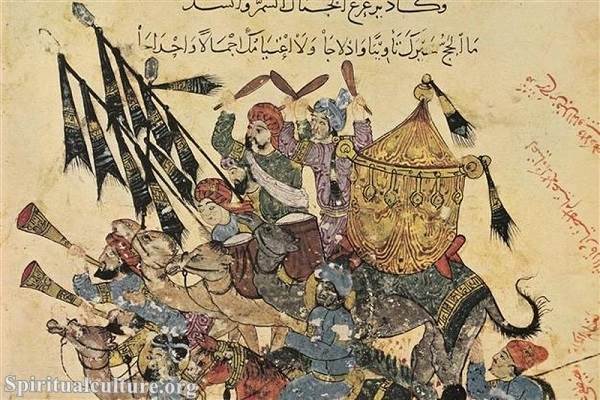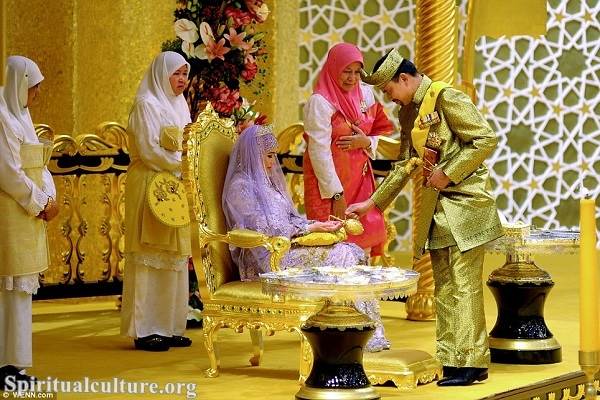To understand how old Islam is in years, we must delve into its origins, significant milestones, the lives of its foundational figures, and the evolution of its practices.
In this article, Spiritual Culture provides a comprehensive exploration of Islam’s age, its historical context, and its ongoing impact on the world today.
Historical Timeline of Islam
Key Events that Mark the Start of Islam
Islam’s origins are traced back to the 7th century CE, specifically to the year 610 CE. This is the year when the Prophet Muhammad, a merchant in the city of Mecca, received his first revelation from Allah (God) through the Angel Gabriel. This event, which took place in the Cave of Hira on the outskirts of Mecca, is considered the beginning of Islam as a religion. Muhammad was 40 years old at the time, and the revelation marked the start of his mission to spread the message of monotheism—worshiping one God—among the people of Mecca, who were predominantly polytheistic.

The revelations continued for 23 years until Muhammad’s death in 632 CE. These revelations were later compiled into the Quran, the holy book of Islam. Another pivotal event in the history of Islam is the Hijra, the migration of Muhammad and his followers from Mecca to Medina in 622 CE. The Hijra was a response to growing persecution in Mecca and is considered so significant that it marks the beginning of the Islamic calendar. The year 622 CE corresponds to the year 1 AH (Anno Hegirae, Latin for “in the year of the Hijra”) in the Islamic lunar calendar.
Significant Milestones in Islamic History
Islam’s early history is marked by a series of significant milestones that helped establish the religion as a major force in the Arabian Peninsula and beyond. After the Hijra, Muhammad became not just a religious leader but also a political and military leader in Medina. His leadership led to the formation of a strong Muslim community that could defend itself and spread its teachings.
In 630 CE, Muhammad and his followers successfully conquered Mecca, a turning point that led to the widespread acceptance of Islam in the Arabian Peninsula. This event is seen as a divine victory in Islamic tradition and solidified Muhammad’s position as the Prophet of Islam. The Kaaba, a sacred structure in Mecca that had been a site of pilgrimage for various Arabian tribes, was cleansed of its idols and dedicated to the worship of Allah alone, making it the most sacred site in Islam.
Following Muhammad’s death in 632 CE, the Muslim community faced the challenge of maintaining unity and continuing the mission of spreading Islam. This period, known as the Rashidun Caliphate (632-661 CE), was led by the first four caliphs, who were close companions of Muhammad. These years saw the rapid expansion of Islam beyond the Arabian Peninsula, reaching as far as North Africa, Persia, and the Byzantine territories. The Caliphs Abu Bakr, Umar, Uthman, and Ali played crucial roles in consolidating Islamic governance, spreading Islamic teachings, and establishing the foundations of what would become a vast Islamic empire.
Important Battles in Early Islam
The early years of Islam were marked by several key battles that were crucial in defending the nascent Muslim community and ensuring its survival. One of the first significant battles was the Battle of Badr in 624 CE. Despite being outnumbered, the Muslim forces won a decisive victory against the Quraysh tribe of Mecca, which greatly boosted the morale of the Muslim community and was seen as a sign of divine favor.
The Battle of Uhud in 625 CE was another significant confrontation. Although the Muslims were initially successful, they ultimately faced a setback due to disobedience within their ranks. This battle taught the early Muslim community important lessons about discipline and reliance on divine guidance. The Battle of the Trench in 627 CE was a defensive battle in which the Muslims, under Muhammad’s leadership, successfully defended Medina against a large coalition of tribes. The battle ended with the withdrawal of the enemy forces and was a turning point that solidified the Muslim community’s position in the region.
These battles, along with other military and political campaigns, were instrumental in establishing the Muslim community’s presence and ensuring its growth. They also contributed to the development of Islamic military strategy and governance, which would later be crucial in the expansion of the Islamic empire.
Foundational Figures in Islam
Life and Timeline of Prophet Muhammad
Prophet Muhammad, the central figure of Islam, was born in 570 CE in Mecca, a city that was a major trading and religious center in the Arabian Peninsula. Orphaned at a young age, Muhammad was raised by his grandfather and later by his uncle. He became known for his honesty and integrity, earning the nickname “Al-Amin,” meaning “the trustworthy.” Before receiving his prophetic mission, Muhammad worked as a merchant and married Khadijah, a wealthy widow who supported him both financially and emotionally.
Muhammad’s life can be divided into two main phases: his time in Mecca and his time in Medina. During his years in Mecca (610-622 CE), Muhammad preached the message of monotheism and social justice, which was met with resistance and hostility from the Quraysh, the dominant tribe in Mecca. Despite the opposition, a small but dedicated group of followers began to gather around him.
The second phase of Muhammad’s life began with the Hijra in 622 CE, when he and his followers migrated to Medina. In Medina, Muhammad established a Muslim community based on the principles of Islamic governance, which included justice, equality, and the worship of one God. Under his leadership, Medina became a model Islamic state, and Muhammad’s role expanded to include that of a political leader and military commander. He successfully united the various tribes of Arabia under the banner of Islam and led several key military campaigns to defend and expand the Muslim community.
Muhammad passed away in 632 CE at the age of 63. His death marked the end of direct divine revelation, but his teachings, preserved in the Quran and Hadith, continue to guide Muslims worldwide. His life remains a model of Islamic piety, leadership, and social justice, and he is considered by Muslims to be the “Seal of the Prophets,” the final prophet sent by God.
The Rightly Guided Caliphs: Brief Histories
After the death of Prophet Muhammad, the leadership of the Muslim community passed to the Rashidun Caliphs, who are also known as the “Rightly Guided” Caliphs. These four leaders—Abu Bakr, Umar, Uthman, and Ali—are revered for their close association with Muhammad and their role in the early expansion and consolidation of Islam.
- Abu Bakr (r. 632-634 CE): Abu Bakr, the first caliph, was a close companion of Muhammad and one of the earliest converts to Islam. His short but impactful reign was marked by the Ridda Wars, in which he successfully quelled rebellions and reasserted Islamic control over the Arabian Peninsula. He also initiated the compilation of the Quran into a single written text, ensuring the preservation of Islamic teachings.
- Umar ibn al-Khattab (r. 634-644 CE): Umar, the second caliph, is credited with transforming the Islamic state into a vast empire. Under his leadership, the Muslim armies conquered large territories, including the Byzantine provinces of Syria and Egypt, as well as the Sassanian Empire in Persia. Umar also established many key administrative and legal institutions that would shape Islamic governance for centuries.
- Uthman ibn Affan (r. 644-656 CE): Uthman, the third caliph, is best known for commissioning the official compilation of the Quran, ensuring its uniformity across the expanding Islamic empire. His reign was marked by internal dissent, and his policies, particularly regarding the appointment of governors from his own clan, led to growing unrest. This unrest culminated in his assassination, which marked the beginning of internal conflict within the Muslim community.
- Ali ibn Abi Talib (r. 656-661 CE): Ali, the fourth caliph and cousin of Muhammad, faced a period of intense civil strife known as the First Fitna. His reign was marked by battles against rival factions, including the Battle of the Camel and the Battle of Siffin. Ali’s leadership is especially revered in Shia Islam, where he is considered the first Imam. His assassination in 661 CE marked the end of the Rashidun Caliphate and the beginning of the Umayyad dynasty.
These caliphs played pivotal roles in the early spread and establishment of Islam. Their leadership helped shape the early Islamic community, and their actions continue to influence Islamic thought and practice to this day.
Influential Contributors to Early Islamic Society
In addition to the Prophet Muhammad and the Rightly Guided Caliphs, many other figures significantly contributed to the development of early Islamic society. These individuals include scholars, military leaders, and companions of the Prophet who played key roles in the spread of Islam and the establishment of Islamic institutions.
- Khalid ibn al-Walid: Known as “The Sword of Allah,” Khalid was a formidable military commander who played a crucial role in many of the early battles that expanded the Islamic empire. His leadership in battles such as Yarmouk and the conquest of Persia was instrumental in securing Muslim dominance in these regions.
- Aisha bint Abi Bakr: Aisha, one of Muhammad’s wives, is one of the most important female figures in Islamic history. She was a scholar and a political leader, and her knowledge of Hadith (the sayings and actions of Muhammad) has greatly contributed to Islamic jurisprudence. Aisha’s teachings and her role in the early Muslim community continue to be highly regarded in Islamic scholarship.
- Bilal ibn Rabah: Bilal was one of the first converts to Islam and is known for being the first muezzin (the person who calls Muslims to prayer). His story is especially significant as he was a former slave who was freed by Muhammad, and his role in the early Muslim community highlights the Islamic principles of equality and social justice.
These figures, among others, played significant roles in shaping the early Islamic community and ensuring the spread and preservation of Islamic teachings.
Calculation of Islam’s Age
How Old is Islam in 2024?
Given that Islam began in 610 CE, as of 2024, Islam is approximately 1,414 years old. This calculation is based on the Gregorian calendar, which is the calendar most commonly used today. The age of Islam can be determined by subtracting the year of the first revelation (610 CE) from the current year (2024 CE). Therefore:
2024 – 610 = 1,414 years
Islam’s age in lunar years, according to the Islamic calendar, is slightly different due to the shorter lunar year (approximately 354 days). The Islamic calendar began in 622 CE with the Hijra, so as of 2024, it is 1,445 AH (Anno Hegirae).
Islamic Calendar vs. Gregorian Calendar
The Islamic calendar, also known as the Hijri calendar, is a lunar calendar consisting of 12 months in a year of 354 or 355 days. It is used to determine the dates of religious events and holidays in Islam, such as Ramadan and Hajj. Because the lunar year is about 11 days shorter than the solar year used in the Gregorian calendar, Islamic years are shorter, and Islamic dates move backward through the seasons over time.
This difference in calendars is important to consider when discussing the age of Islam. While 1,414 years have passed according to the Gregorian calendar, 1,445 years have passed according to the Islamic lunar calendar since the Hijra. This results in slight variations in the calculation of Islam’s age depending on which calendar is used.
The Evolution of Islam Over Time
Growth and Spread of Islam
From its beginnings in the Arabian Peninsula, Islam rapidly spread to other parts of the world. Within a century of Muhammad’s death, Islam had spread across the Middle East, North Africa, and into Spain and Central Asia. This expansion was facilitated by both military conquests and the appeal of Islamic teachings, which resonated with diverse populations.
Islamic civilization flourished during the Umayyad and Abbasid caliphates, which saw advancements in science, medicine, philosophy, and the arts. The Golden Age of Islam, roughly from the 8th to the 14th century, was a period of great intellectual and cultural development that had a lasting impact on both the Islamic world and Europe.
Islam’s Impact on World History
Islam has had a profound impact on world history, shaping the cultural, political, and social landscapes of many regions. The Islamic Golden Age contributed significantly to the fields of science, mathematics, medicine, and philosophy, with scholars such as Al-Khwarizmi, Avicenna, and Averroes making groundbreaking contributions that influenced both the Islamic world and Europe.
The spread of Islam also facilitated trade and cultural exchange across vast regions, connecting the Mediterranean world with Africa, India, and Southeast Asia. Islamic empires, such as the Ottoman Empire, the Mughal Empire, and the Safavid Empire, played major roles in global politics and economics for centuries.
Islam’s influence continues to be felt today, with its teachings guiding the lives of over a billion people worldwide. The religion’s principles of social justice, charity, and community remain central to the lives of Muslims, and its impact on art, architecture, literature, and law can be seen across the globe.
Conclusion
Islam is over 1,400 years old, with a rich history that has shaped civilizations and continues to influence the world today. From its origins in 610 CE to its present-day status as one of the world’s major religions, Islam’s journey is marked by profound events, influential figures, and significant contributions to human history. Understanding the age of Islam involves not just a calculation of years, but an appreciation of its enduring legacy and its role in shaping the modern world.



